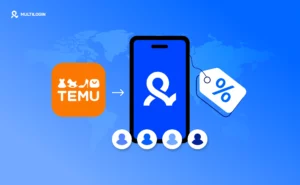Table of Contents
Fingerprint Masking
Every time you browse the web, you leave behind tiny bits of information that can be pieced together to track your online activities. This process is known as fingerprinting. Luckily, there’s a way to keep your digital identity private – it’s called fingerprint masking.
What is Fingerprint Masking?
Fingerprint masking is a technique used to disguise or alter the unique identifiers that websites and online services use to track and identify users. These identifiers, collectively known as a “fingerprint,” include various pieces of data about your device, browser, and online behavior.
Masking these fingerprints enhances privacy and reduces the likelihood of being tracked or identified online. Additionally, masking this information makes it much harder for anyone to track or profile you online.
Why Do You Need Fingerprint Masking?
Every time you visit a website, your browser and device give away a lot of information like:
- The type and version of your browser
- Your operating system
- Installed plugins and fonts
- Screen resolution and color settings
- Time zone and language preferences
- And many more
This collection of data creates a “fingerprint” that can identify and track you as you move around the web. Masking your fingerprint makes it difficult for websites to follow you, protecting your privacy.
How Does Fingerprint Masking Work?
There are several methods to mask your digital fingerprint.
Here are some common techniques:
- Browser Extensions: These tools can randomize or standardize the data your browser shares with websites.
- Virtual Private Networks (VPNs): VPNs hide your IP address, adding an extra layer of anonymity.
- Private Browsing Modes: Using incognito or private browsing modes can reduce the amount of data your browser shares.
- Custom Browser Configurations: Adjusting your browser settings to limit the information it shares.
Benefits of Fingerprint Masking
Enhanced Privacy: Fingerprint masking greatly boosts your online privacy. It makes it harder for websites to track your activities across the web, preventing companies and third parties from building detailed profiles based on your browsing habits and search history. This leads to a more private and anonymous browsing experience.
Control Over Your Data: With fingerprint masking, you gain more control over your personal data. Your digital fingerprint can reveal a lot about you, like your device type, operating system, and browsing preferences. Masking this fingerprint lets you decide what information you share and with whom, giving you greater control over your online presence and data.
Types of Fingerprints and Masking Methods
- Browser Fingerprint Masking: Altering the information your browser shares with websites. Privacy-focused browsers or extensions can help mask this data.
- Device Fingerprint Masking: Changing the data related to your device, like hardware configurations. Advanced tools can randomize device-related information to prevent tracking.
- Hardware Fingerprint Masking: Disguising the hardware characteristics of your device, such as your GPU, CPU, and other hardware identifiers.
Quick Ways to Mask Fingerprints
Use Antidetect Browsers
Most antidetect browsers can alter various browser characteristics, such as user agent strings, screen resolution, and time zone, to create a unique fingerprint for each session.
For instance, Multilogin is a powerful antidetect browser that can help mask your fingerprint. It works by simulating multiple unique browser environments, making it much harder for trackers to recognize you.
Install Browser Extensions
Browser extensions are tools that can block trackers and ads that collect data about your browsing habits, reducing the amount of information available to fingerprinting techniques.
Clear Your Browser Data
Clearing cookies and cache can help minimize your digital footprint. Websites often use cookies to store information about your browsing habits, which can contribute to your fingerprint. Most browsers offer options to clear cookies and cache manually, and there are also extensions available that can automate this process.
Use a VPN
A VPN masks your IP address and encrypts your internet traffic. This not only hides your IP address from websites but also adds an extra layer of encryption to your data, making it harder for third parties to intercept and analyze your traffic.
Note that simply using these is not nearly enough to mask fingerprints. At some point you would inevitably need an antidetect browser to properly mask your fingerprint.
Key Takeaways
Fingerprint masking offers a robust way to enhance your online privacy. Whether you’re using browser fingerprint masking, device fingerprint masking, or hardware fingerprint masking, these techniques provide a shield against tracking and profiling.
People Also Ask
While no method is 100% foolproof, fingerprint masking significantly reduces the ability of websites and advertisers to track you.
Yes, many fingerprint masking techniques and tools are available for both desktop and mobile devices.
Many fingerprint masking tools are user-friendly and do not require advanced technical skills. However, understanding the basics can help you make the most of these tools.
Related Topics

Stop buying aged TikTok accounts: build safer long-term profiles with Multilogin
TikTok has turned into one of the most important platforms

How to use Pinterest for marketing: mobile-first strategy powered by Android emulation
Why marketers now rely on Android-emulation to unlock mobile-only traffic,

Temu coupon codes for existing users: how to unlock more mobile discounts with Multilogin
If you have been shopping on Temu for a while,